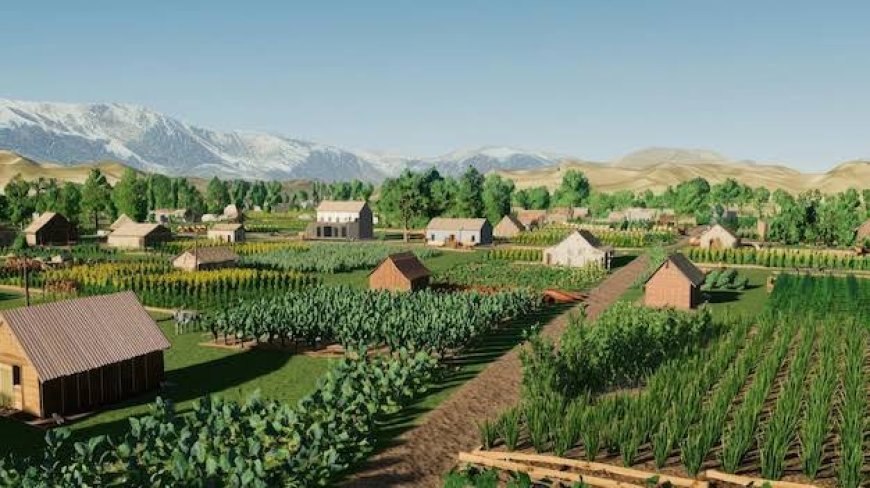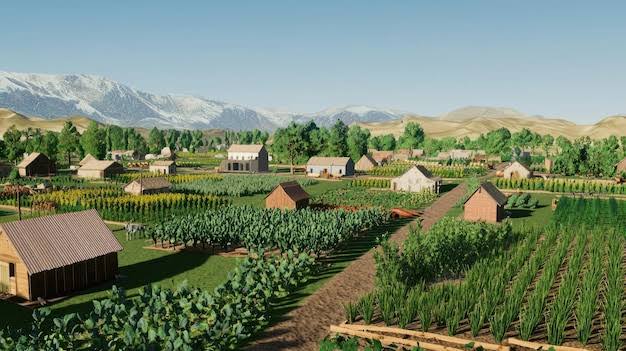US Unveils New Bracero Program 2.0: Is This the End of Undocumented Agrotourism in America?


In recent years, the U.S. agricultural industry has faced significant challenges, primarily driven by labor shortages that have worsened due to a range of factors. Among the most pressing of these factors is the crackdown on undocumented workers, which has caused an alarming depletion in the workforce essential for seasonal agricultural work. The Bracero Program 2.0, a new piece of legislation introduced by U.S. Representative Monica De La Cruz, aims to address these challenges by reforming the temporary worker program for agriculture. This bill seeks to create a more efficient and accessible pathway for migrant workers to legally work in the U.S., easing the burden on farmers and strengthening the agricultural sector.
De La Cruz’s bill, officially known as the Bracero Program 2.0 Act, seeks to build upon the historical legacy of the original Bracero Program, which was in place from 1942 to 1964. This new initiative aims to modernize the program and ensure that U.S. farms can continue to operate effectively despite the shrinking labor pool. The legislation introduces several key changes to the H-2A visa program, which is currently the primary method for foreign workers to legally fill seasonal agricultural jobs in the U.S. These changes include a wage increase for program participants, a simplified application process for employers, and a new pilot program that allows workers to change jobs within a state without the need to reapply for a visa.
The Need for Reform: A Struggling Agricultural Sector
Farm labor shortages in the U.S. are not a new problem, but the current immigration enforcement policies have amplified these issues, making it even more difficult for agricultural businesses to maintain a stable workforce. Over the past few years, the increased number of immigration raids, particularly during the Trump administration’s heightened crackdown on undocumented workers, has further strained the agricultural sector. The arrests of undocumented farmworkers have resulted in significant reductions in the available labor force, leaving many farms scrambling to find enough workers to meet seasonal demands.
In Hidalgo County, Texas, for example, approximately 80% of the agricultural workforce consists of undocumented immigrants, according to reports from the National Center for Farmworker Health. These workers, who have traditionally filled vital roles in the fields, are now being targeted by immigration enforcement. As a result, farmers are left with a difficult dilemma: how to keep up with labor needs while remaining compliant with immigration laws. The Bracero Program 2.0 Act is being introduced as a potential solution to this issue, providing a legal pathway for migrant workers to fill these essential positions without contributing to the growing issue of undocumented labor.
Key Components of the Bracero Program 2.0 Act
The Bracero Program 2.0 Act introduces several important changes to the existing H-2A visa system, aiming to make it easier for agricultural workers to legally enter the U.S. and for employers to access this vital labor. One of the primary elements of the bill is the proposed wage increase for workers in the program. This increase is intended to ensure that migrant workers are compensated fairly for their labor, making it a more attractive option for potential workers while also addressing concerns about the exploitation of migrant labor. By raising wages, the bill seeks to balance the need for affordable labor with the goal of improving the working conditions for farmworkers.
Another key provision of the bill is the simplification of the application process for employers. Currently, the process for hiring H-2A workers is cumbersome and time-consuming. Employers are required to submit paper applications, provide supporting documents, and go through a lengthy back-and-forth with state and federal agencies to secure the necessary permits. The Bracero Program 2.0 Act aims to streamline this process, making it easier for agricultural employers to hire the workers they need without unnecessary delays or paperwork.
Additionally, the bill introduces a regional pilot program that allows workers to change jobs within the same state without needing to reapply for a visa. This flexibility would enable workers to move between different employers within a given state, making it easier for them to find work and for employers to meet seasonal labor demands. This new feature is expected to provide greater mobility and reduce the barriers that currently limit workers’ ability to take advantage of available job opportunities within the agricultural sector.
Addressing Labor Shortages: The Role of Migrant Workers
The Bracero Program 2.0 is seen as a critical response to the labor shortages faced by U.S. farmers. The agricultural sector is highly dependent on seasonal labor, and the demand for farmworkers increases during certain times of the year, particularly during harvest seasons. However, as the U.S. workforce has shifted toward more urban-centered jobs, fewer U.S. citizens are willing to take on the physically demanding and often low-paying jobs in agriculture. This leaves the agricultural sector reliant on migrant labor, often from countries like Mexico and Central America.
Migrant workers have long been an integral part of the U.S. agricultural workforce. However, the current state of immigration enforcement and the complexities of the H-2A visa system have made it more difficult for workers to legally fill these jobs. The Bracero Program 2.0 Act addresses these challenges by creating a legal pathway for more migrant workers to enter the U.S. and fill these vital roles. By providing a streamlined process for employers and better protections for workers, the bill aims to ensure that the agricultural sector can continue to thrive while adhering to immigration laws.
Addressing the Debate: The Issue of Undocumented Workers
One of the major concerns raised by critics of the Bracero Program 2.0 Act is its focus on legalizing temporary labor while failing to address the issue of undocumented workers who are already in the U.S. The U.S. agricultural sector has long relied on undocumented workers, and many farmworkers who have been living in the country without legal status are now at risk of deportation under stricter immigration policies. While the Bracero Program 2.0 Act aims to address the labor shortage by legalizing the entry of new workers, it does not offer a path to legalization for those who are already working in the U.S. without documentation.
This issue has been a point of contention in U.S. immigration reform debates, with some lawmakers arguing that a more comprehensive solution is needed to address the status of existing undocumented workers. Without providing a pathway to legal status for the millions of undocumented farmworkers who have been working in the U.S. for years, critics argue that the bill may fail to address the root causes of the labor shortage in the agricultural sector.
The Future of U.S. Immigration and Farm Labor
While the Bracero Program 2.0 Act offers a potential solution to the labor shortages in the agricultural sector, it is unlikely to be a panacea for all the challenges facing U.S. farmers. The bill’s narrow focus on temporary workers and its exclusion of undocumented workers means that the U.S. agricultural sector will still face challenges in the long term. The debate over immigration reform, particularly in relation to farm labor, is far from settled, and it is likely that future legislative efforts will continue to address the issue of undocumented workers and their role in the economy.
The Bracero Program 2.0 Act is a step in the right direction, but it will need to be part of a broader approach to reforming the U.S. immigration system, particularly in relation to the agricultural sector. Lawmakers, industry leaders, and immigration advocates will need to continue working together to find solutions that address the needs of U.S. farmers, protect workers’ rights, and provide a fair and humane solution for those who are already in the country.
Conclusion: A Critical Step for U.S. Agriculture
The Bracero Program 2.0 Act represents a significant effort to address the labor shortages in the U.S. agricultural sector. By streamlining the process for temporary workers to enter the country legally and increasing wages for farmworkers, the bill aims to ensure that farmers have access to the labor they need to keep their operations running smoothly. The introduction of the regional pilot program, which allows workers to move between employers within a state, adds flexibility and reduces barriers to entry for workers.
However, the bill’s limitations, particularly its failure to provide a pathway to legalization for undocumented workers, mean that the agricultural sector will continue to face challenges. While the Bracero Program 2.0 Act offers a temporary solution, it must be accompanied by broader immigration reform to ensure that the U.S. agricultural workforce is stable, sustainable, and fair for all workers. As the bill moves through the legislative process, it will be crucial for lawmakers to continue addressing the complexities of farm labor and immigration reform to create a more effective and just system for all involved.
The post US Unveils New Bracero Program 2.0: Is This the End of Undocumented Agrotourism in America? appeared first on Travel And Tour World.






